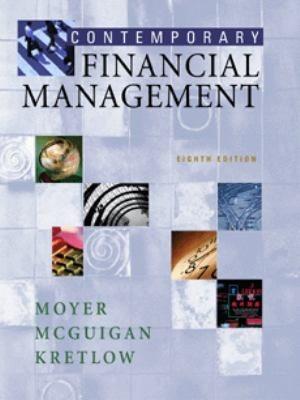LeCompte Learning Solutions is considering making a change to its capital structure in hopes of increasing its value. The company's capital structure consists of debt and common stock. In order to estimate the cost of debt, the company has produced the following table:
| Percent financed | Percent financed | Debt-to-equity | Bond | Before-tax |
| with debt (wd) | with equity (ws) | ratio = wd/ws = (D/S) | Rating | cost of debt |
| 0.10 | 0.90 | 0.10/0.90 = 0.11 | AAA | 7.0% |
| 0.20 | 0.80 | 0.20/0.80 = 0.25 | AA | 7.2 |
| 0.30 | 0.70 | 0.30/0.70 = 0.43 | A | 8.0 |
| 0.40 | 0.60 | 0.40/0.60 = 0.67 | BBB | 8.8 |
| 0.50 | 0.50 | 0.50/0.50 = 1.00 | BB | 9.6 |
The company uses the CAPM to estimate its cost of common equity, rs. The risk-free rate is 5% and the market risk premium is 6%. LeCompte estimates that if it had no debt its beta would be 1.0. (Its "unlevered beta," bU, equals 1.0.) The company's tax rate, T, is 25%. On the basis of this information, what is LeCompte's optimal capital structure, and what is the firm's cost of capital at this optimal capital structure?
| | a. ws = 0.8; wd = 0.2; WACC = 10.78% | | |
| | b. ws = 0.7; wd = 0.3; WACC = 9.11% | | |
| | c. ws = 0.5; wd = 0.5; WACC = 11.37% | | |
| | d. ws = 0.6; wd = 0.4; WACC = 9.50% | | |
| | e. ws = 0.9; wd = 0.1; WACC = 11.73% | |






